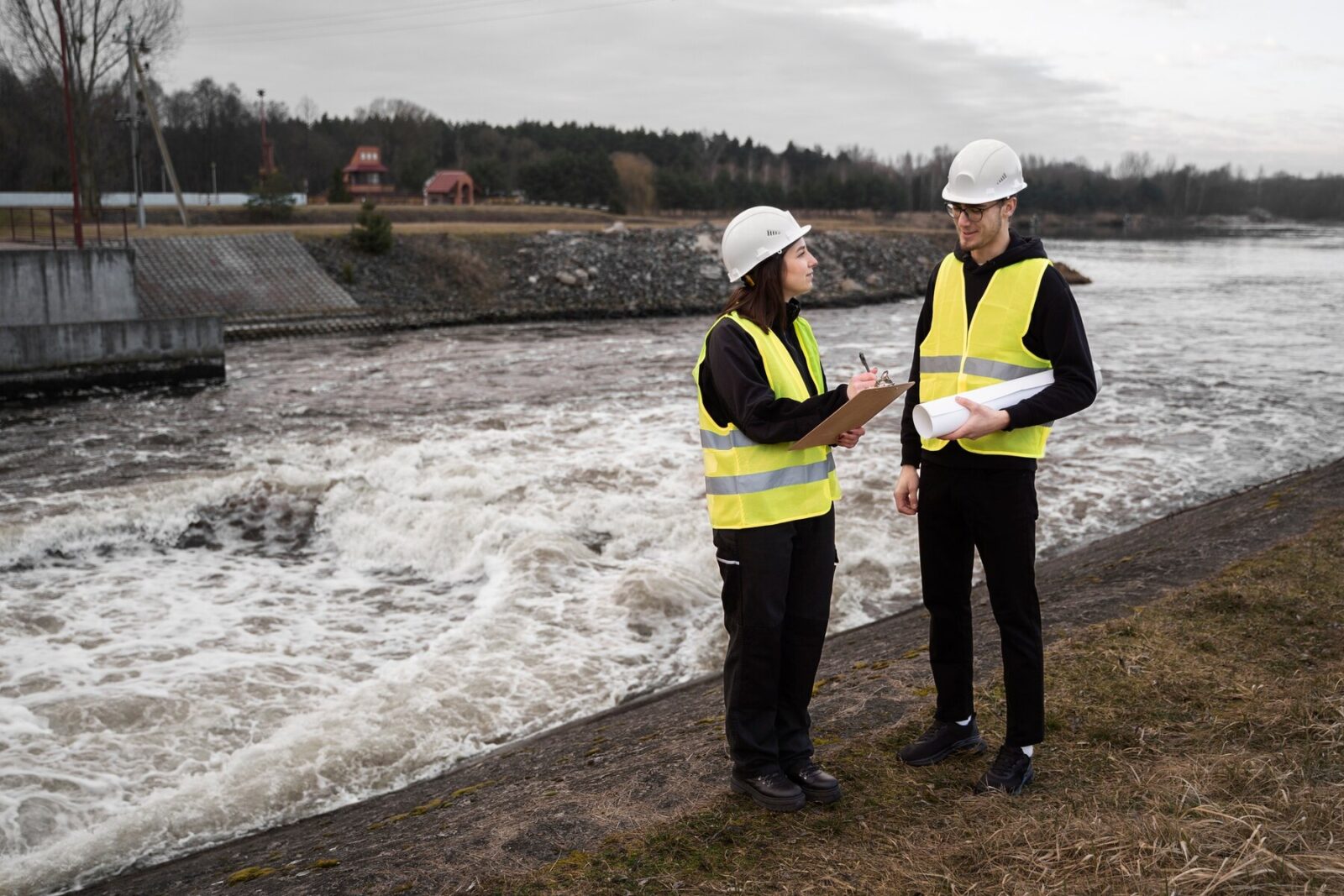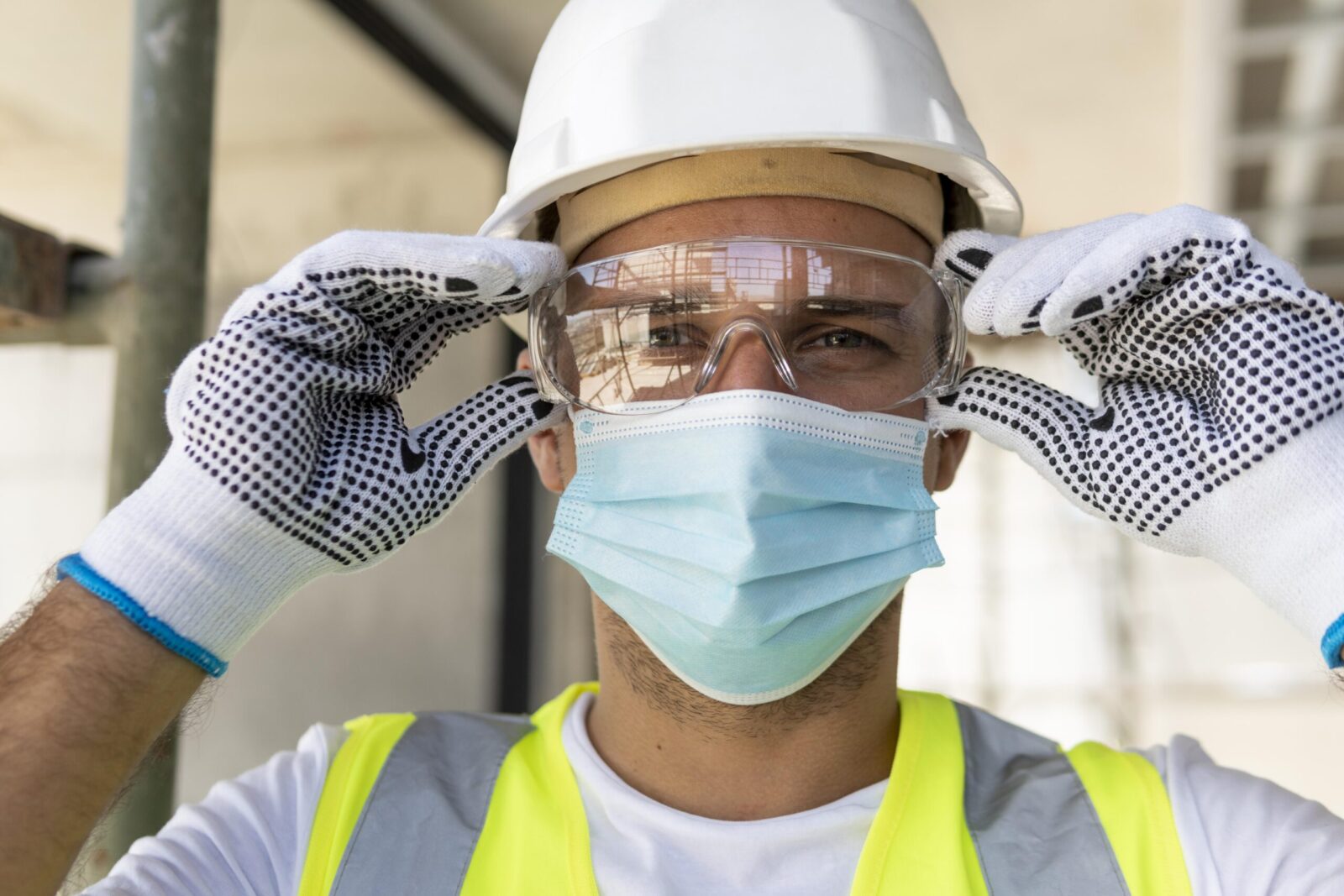
Essential PPE in the Food Industry: What You Need to Know
Overwhelmed by PPE options for food safety? Master your PPE selection for food workers safety with these practical tips.

Get 20€ off on your first order!
European weather often brings rain showers, and having reliable waterproof gear ensures comfort and productivity for professionals in industries like construction, manufacturing, or agriculture. With the right rain pants, you can stay comfortable and dry, ensuring productivity regardless of the forecast.
Fortunately, the right Rain Pants can provide the reliable waterproofing you need. This comprehensive guide will equip you with the knowledge to choose the best rain pants for your needs, ensuring you remain productive and comfortable in any downpour.
Additionally, we’ll help you tackle your next challenge: finding complementary gear to keep you fully protected in wet environments.

Rain pants, also called rain trousers or waterproof pants, are specially designed to keep you dry in wet conditions. They are commonly used in industries such as construction, manufacturing, warehousing, logistics, and agriculture. By providing waterproofing, breathability, and durability, rain pants ensure you stay comfortable and productive no matter the weather.
Explore our full collection of rain pants.
Selecting the perfect rain pants involves balancing several factors to meet your needs:
Rain pants are designed to meet a variety of needs, offering varying levels of protection against water to suit different work environments and conditions. Look for ratings such as waterproof or water-resistant, which indicate the fabric’s effectiveness.
Fully waterproof pants with sealed seams can be an excellent choice for heavy rain. Learn more in our article on Waterproof vs. Water-Resistant: Understanding Rain Pants Ratings.
Breathable rain pants ensure comfort by allowing sweat to escape while blocking water. High-performance rain pants incorporate breathable materials that allow sweat to escape while blocking water. For an in-depth look at the best materials for rain pants, check out Top Materials for Rain Pants: Breathability Meets Waterproofing.
For industries like logistics and agriculture, lightweight and packable rain pants are ideal for quick deployment. These pants often feature compact designs that fit easily into your work gear.
Durability is especially valuable for heavy-duty applications like construction. Reinforced fabrics and abrasion-resistant designs are essential. See our guide on How to Choose Rain Pants for Construction.
Proper fit is critical for mobility and comfort. Adjustable waistbands, ankle zippers, and articulated knees can make a significant difference. Use our size chart below for guidance.
| Size (EU) | Waist (cm) | Inseam (cm) |
| S | 70-78 | 75-80 |
| M | 78-86 | 80-85 |
| L | 86-94 | 85-90 |
| XL | 94-102 | 90-95 |
| XXL | 102-110 | 95-100 |
Rain pants are essential across various European industries:
When selecting rain pants, it is important to ensure they meet relevant EN standards, which guarantee safety, quality, and performance for professional use. Here are the key standards to look out for:
Understanding and choosing rain pants that meet these standards ensures compliance with industry regulations and enhances safety and comfort during use. Learn more about EN Standards from this guide in Wikipedia.
When it comes to high-quality rain pants, trust these top European suppliers:
Browse their catalogs to find rain pants tailored to your needs.
For complete protection, consider pairing your rain pants with related workwear:
Learn more in our articles: Work Jackets: Selecting The Right Outerwear and How To Choose The Right Work Pants – A Buyer’s Guide.
We hope this guide has been invaluable in helping you navigate the essential factors for choosing the best rain pants, from waterproofing to industry-specific needs. Whether you’re tackling construction projects, staying productive in manufacturing, or ensuring efficiency in logistics, our curated collection of rain pants has you covered.
Need more insights or advice? Dive into related resources like Selecting The Best Work Overalls: A Practical Guide or our Safety Shoes Buyer’s Guide.
Remember, your next step is as important as your first. Once you’ve chosen your rain pants, explore complementary gear such as work jackets to stay fully equipped for any challenge. Let us support you every step of the way—ensuring your comfort, safety, and confidence on the job.
– The Droppe Team
To extend the life of your rain pants, clean them according to the manufacturer’s care instructions. Typically, this involves machine washing with mild detergent on a gentle cycle and avoiding fabric softeners. Air dry or tumble dry on low heat if recommended.
Yes, many rain pants can be repaired using waterproof patch kits or seam-sealing tape. These solutions ensure the waterproof integrity of the pants is maintained after minor damage.
While rain pants provide waterproofing, they may not offer insulation. For cold, wet environments, consider layering with thermal wear or opting for insulated rain pants designed for winter conditions.
Yes, many rain pants meet high-visibility standards such as EN ISO 20471. These options are ideal for professionals working in low-light or high-traffic environments.
Accessories like waterproof gaiters, suspenders, and adjustable belts can enhance the functionality and fit of your rain pants. Additionally, pairing them with waterproof work boots ensures full-body protection in wet conditions.
Thank you! You've signed up for our newsletter.



















Overwhelmed by PPE options for food safety? Master your PPE selection for food workers safety with these practical tips.

Struggling to maintain clear vision in demanding environments? This guide is here to help. By the end, you’ll know exactly...

Electricians across Europe face unique challenges that require reliable safety glasses to ensure both protection and efficiency. Whether safeguarding against...

Overwhelmed by PPE options for food safety? Master your PPE selection for food workers safety with these practical tips.

Struggling to maintain clear vision in demanding environments? This guide is here to help. By the end, you’ll know exactly...

Electricians across Europe face unique challenges that require reliable safety glasses to ensure both protection and efficiency. Whether safeguarding against...
Get 20€ off on your first order!
Save 30% by buying directly from brands, and get an extra 10€ off orders over €100
Save 30% by buying directly form brands, and get an extra 10€ off orders over €100